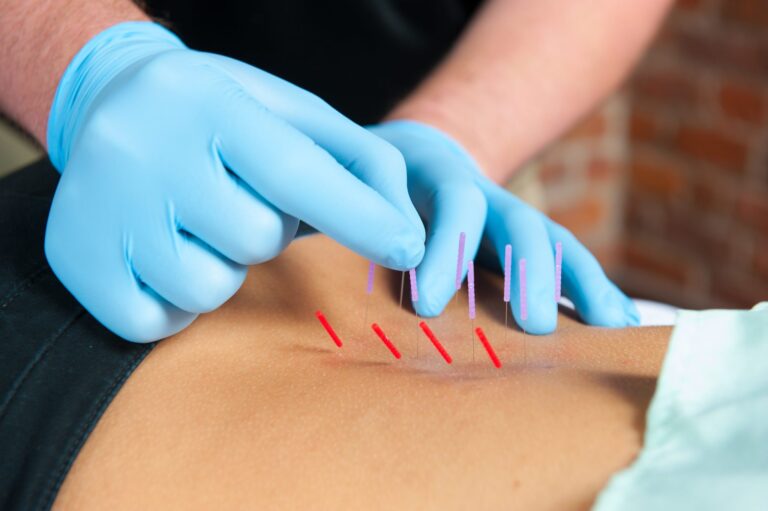Dry Needling

What is Dry Needling?
Dry needling is a modern therapeutic technique used by physical therapists to treat muscle pain and dysfunction. It involves inserting fine, filiform needles into myofascial trigger points—knots in muscles that cause pain and tension. Unlike acupuncture, which is based on traditional Chinese medicine, dry needling is rooted in Western medical principles and focuses on relieving musculoskeletal pain and improving function.
How Does It Work?
When a needle is inserted into a trigger point, it causes a local twitch response, which is a quick, involuntary contraction of the muscle. This response helps release the tight muscle bands, increase blood flow, and reduce inflammation. The result is decreased pain and improved range of motion. The needles also stimulate the nervous system, promoting the body’s natural healing processes.
Benefits of Dry Needling
Pain Relief: Dry needling is highly effective in reducing pain associated with muscle tension, myofascial pain syndrome and chronic pain conditions.
Enhanced Mobility: By releasing tight muscle bands and reducing muscle tension, dry needling helps improve flexibility and range of motion.
Accelerated Recovery: Athletes and individuals recovering from injuries often find that dry needling speeds up the healing process by promoting blood flow and reducing muscle tightness.
Complementary Therapy: Dry needling can be used alongside other treatments, such as physical therapy, massage, and exercise, to enhance overall outcomes.
What to Expect During a Session
A typical dry needling session begins with a thorough assessment by a trained therapist. They will identify the areas of muscle tension and trigger points. The therapist then inserts sterile, thin needles into these points. You may feel a slight prick, followed by a muscle twitch or a deep ache. These sensations are normal and indicate that the therapy is targeting the problem areas.
Is Dry Needling Right for You?
Dry needling is suitable for a wide range of individuals experiencing musculoskeletal pain, including athletes, office workers, and those with chronic pain conditions. However, it’s essential to consult with a qualified therapist to determine if it’s the right treatment for your specific needs. People with certain medical conditions or needle phobia should discuss alternative therapies with their healthcare provider.
